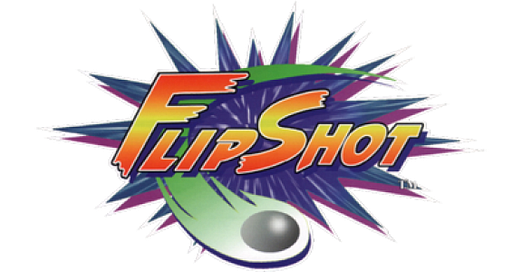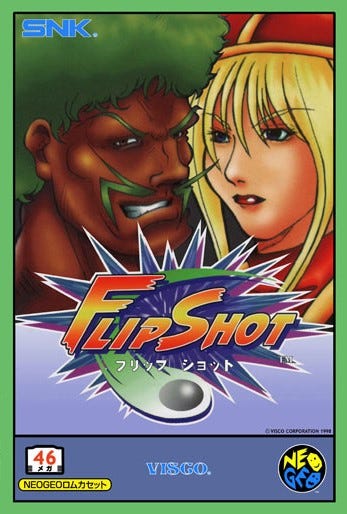This column is “XP Arcade,” in which I’ll focus on a game from the arcades, or one that is clearly inspired by arcade titles, and so on. Previous entries in this series can be found through this link.
One of the wonderful things about the Neo Geo Advanced Entertainment System is that developers didn’t have to worry as much — relative to other consoles — about whether or not people would want to play a particular title in their living room, or if it was better off sitting in an arcade drawing crowds. Neo Geo arcade titles became AES releases with regularity: there were 149 games released for the arcade Multi Video System (MVS), and 118 of those ended up on the AES as well. Plus, anyone who actually spent the $649 on a Neo Geo home console in 1991 — adjusted for inflation, that’s $1,420 in 2022 — was likely loaded and either a games sicko or the parent of one. They weren’t spending that money to just buy one version of King of Fighters and call it a day, is what I’m getting at.
That brings us to the not-so-wonderful part about the Neo Geo AES, though. Games could cost up to $300, as they were literally arcade games you could play in your living room — especially early on in the system’s life, these were cutting-edge, 24-bit games in a period of 16-bit dominance. So, not everything would get a home counterpart, because at some point, the effort wasn’t necessarily worth it to a publisher. Take Battle Flip Shot, for instance. This is a Pong-like game featuring characters who look like they were ripped out of comics, a fighting game, an even more over-the-top American Gladiators, but they’re basically just playing Pong. As part of the game itself, mind you, but still.
Don’t get me wrong, Battle Flip Shot is a good time, and even generated a sequel, Bang Bead. It’s an extremely arcade concept, though, the kind of thing we’d gladly fork over $5 or $10 for digitally to play on a modern system, but at AES prices? You probably needed to be really loaded and/or sicko for that. It also wasn’t released during the prime of the MVS or AES: Battle Flip Shot came out in North America in 1998, a year after the 64-bit successor to the MVS had arrived. (The Hyper Neo Geo 64 was fully 3D, but also a flop with just seven games, compared to the 149 made for the MVS. Still, the intent was to move into the next generation, alongside instead of ahead of the at-home curve.) Maybe it could have had a Neo Geo CD release instead, which would have meant a $50 game instead of one that cost a few hundred bucks, but there were also fewer than 600,000 of those things sold, too, so again, you can see why maybe Visco was content to just let this one be an arcade-only title. [Update: 10/22/2023: Now, 25 years later, there is a Neo Geo CD release of Battle Flip shot, and both that game and its successor, Bang Bead, are in 2023’s VISCO Collection]
Here’s how the game works. Rather than using a paddle to send a ball back-and-forth trying to get it past another paddle, in Battle Flip Shot, you control one of five characters, each armed with a shield. You bounce the ball back and forth between the players, either slowly walking up and down and forward and back (though, without crossing the mid-arena line), or you can slide quickly in the chosen direction in order to make a desperate attempt at a block of the ball.
Each character has their own unique special shot, which you can use at any time by pressing the A button. Siren uses the Rising Shot, which electrifies the ball. Chinta Nemota has the Quick Shot — it moves faster but becomes larger, so it’s both more difficult and easier to volley. Mr. Justice has the Hard Shot, which can knock a player aside if they don’t block it correctly. Bloody Wolf has the Tornado Shot that looks like a spinning, thrown axe, and Saimon has the Trick Shot, which can make the ball blink out of sight and appear smaller or larger. You can control the angle of the shot coming off of your shield when you use these special maneuvers, so you can attempt to arc the ball behind your opponent instead of just hoping it will eventually bounce at the correct angle to go by them.
And you have to be precise about these movements, too, as you have to knock out the six little objects behind the player in order to win. They’re all in a line, but you need some intentionality in your shots, or else you’ll either run out of time or your own objects before you can take out all of your opponent’s. If your goal is just to win as fast as possible before you can lose or the 99 seconds for a round tick off, then be aggressive. But if you want to score more points, you’ll need to volley back-and-forth for a bit before each knockout hit: the scores are higher the longer it takes in between these object hits.
Everything about this is structured like a fighting game, outside of the actual act of Pong-like play. The extremely muscular characters, again, look like they could be in a fighting game. They even have some backstories that fit their appearance: Mr. Justice, for instance, looks like a 42-year-old roided-out superhero wannabe, and it turns out that when he’s not in the arena flip shotting, he’s a cop. There’s an announcer, and you get these massive character profile sprites before a match, with the two facing off against each other, and each is a best two-of-three, like with your standard fighting game. The game also literally says “FIGHT” in all caps before a match begins — they weren’t being subtle here. There’s some comedic post-match banter, as well — for instance, if Bloody Wolf defeats the other woman on the roster, Siren, she brags about how much her bust is insured for ($1 million, in case you’re curious what that market was like for a famous fictional athlete in 1998). It’s not quite “Go home and be a family man!” but it still made me laugh at how goofy and weirdly out of place it is. In a good way.

Rather than bringing Battle Flip Shot to AES or Neo Geo CD, Visco would get to work creating a sequel that addressed some of the concerns of the original. The character roster is larger in Bang Bead, for instance — there are seven starting characters, plus two unlockable bosses who become playable after completing the game with each of the seven starter characters— and you can no longer just spam the special shot every single time: you have limited uses of that, so you have to be a little more selective and smarter about when to deploy it, instead of just slamming down A for trick shots again and again.
The funny thing about Bang Bead, though, is that it’s somehow even more obscure than Battle Flip Shot. It released in 2000, after Neo Geo hardware manufacturing had been discontinued but was still supported in terms of game development by SNK. The Fandom wiki for SNK has a Bang Bead entry, but there’s very little information there. That shouldn’t come as a surprise, considering this nugget starts things off: “The game was produced in very limited quantities, being believed to have not been released at all for quite some time.”
While I wish there was an actual citation for that statement to read, can you imagine a game being released in such a limited way that it’s unclear if it even released at all? Finding an authentic cartridge instead of a reproduction is a difficult endeavor, but unless you’re a collector, you can just find the ROM yourself. It can be played through a number of emulation options, including MAME, and the same goes for Battle Flip Shot. If you were lucky enough to get Hylostick going before that all shut down, congrats on your good fortune, since you can play both on an arcade stick like God/Visco intended.
With any luck, Battle Flip Shot (and Bang Bead) will eventually be released through Arcade Archives, as part of the Neo Geo-centric ACA Neo Geo series. As arcade-only curiosities, they’re essentially exactly what that form of preservation is perfect for.
This newsletter is free for anyone to read, but if you’d like to support my ability to continue writing, you can become a Patreon supporter, or donate to my Ko-fi to fund future game coverage at Retro XP.




